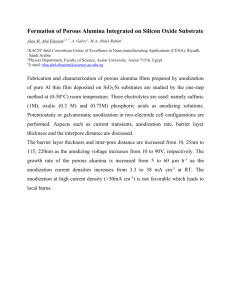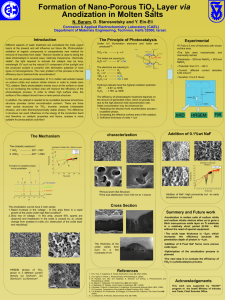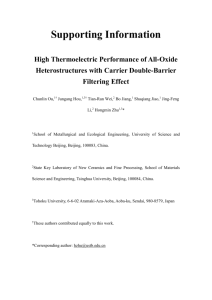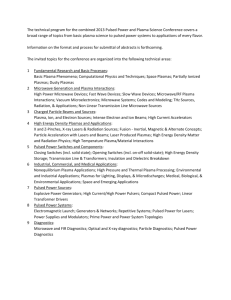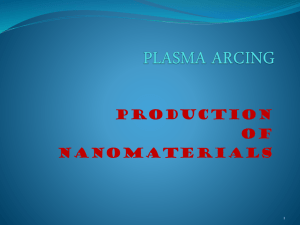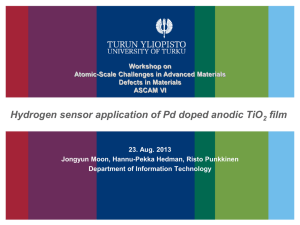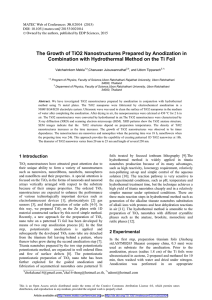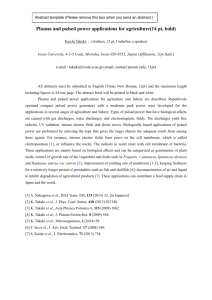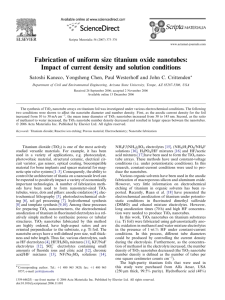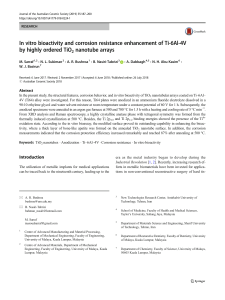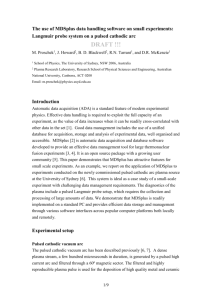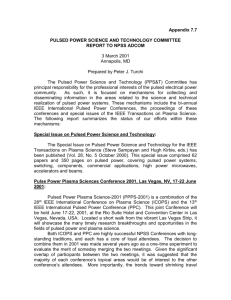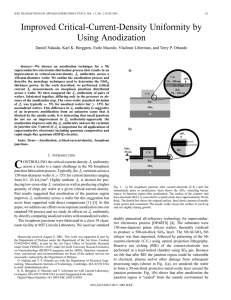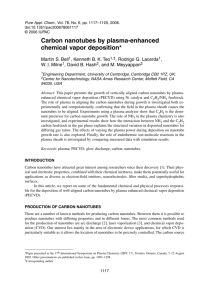Supplemental materials
advertisement
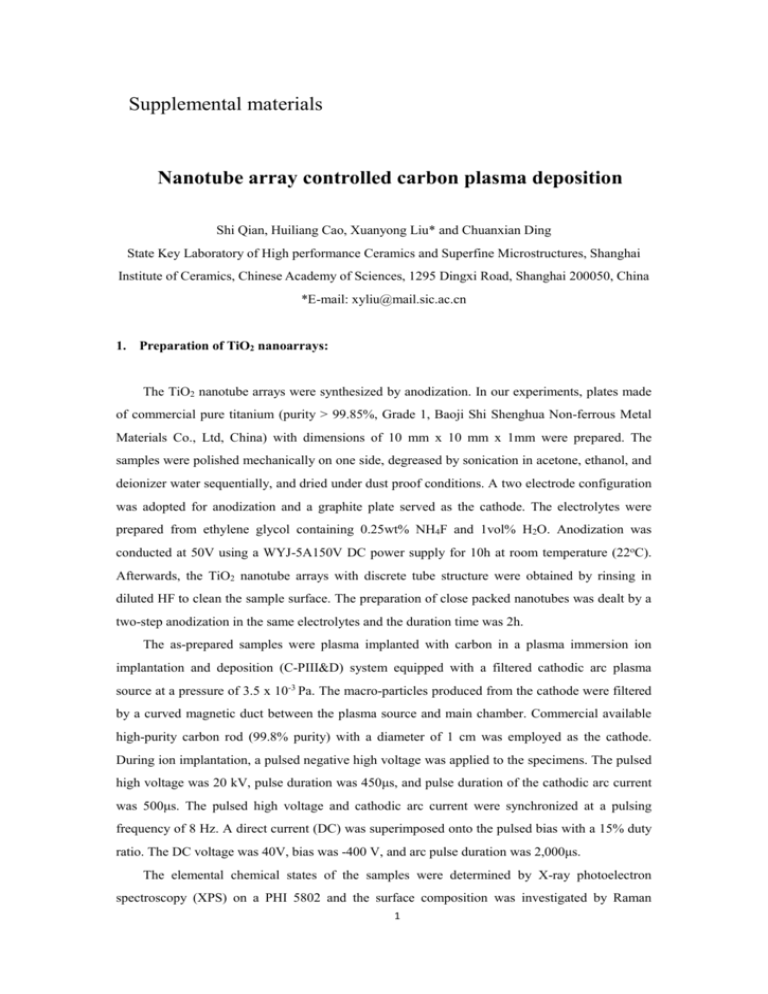
Supplemental materials Nanotube array controlled carbon plasma deposition Shi Qian, Huiliang Cao, Xuanyong Liu* and Chuanxian Ding State Key Laboratory of High performance Ceramics and Superfine Microstructures, Shanghai Institute of Ceramics, Chinese Academy of Sciences, 1295 Dingxi Road, Shanghai 200050, China *E-mail: xyliu@mail.sic.ac.cn 1. Preparation of TiO2 nanoarrays: The TiO2 nanotube arrays were synthesized by anodization. In our experiments, plates made of commercial pure titanium (purity > 99.85%, Grade 1, Baoji Shi Shenghua Non-ferrous Metal Materials Co., Ltd, China) with dimensions of 10 mm x 10 mm x 1mm were prepared. The samples were polished mechanically on one side, degreased by sonication in acetone, ethanol, and deionizer water sequentially, and dried under dust proof conditions. A two electrode configuration was adopted for anodization and a graphite plate served as the cathode. The electrolytes were prepared from ethylene glycol containing 0.25wt% NH4F and 1vol% H2O. Anodization was conducted at 50V using a WYJ-5A150V DC power supply for 10h at room temperature (22oC). Afterwards, the TiO2 nanotube arrays with discrete tube structure were obtained by rinsing in diluted HF to clean the sample surface. The preparation of close packed nanotubes was dealt by a two-step anodization in the same electrolytes and the duration time was 2h. The as-prepared samples were plasma implanted with carbon in a plasma immersion ion implantation and deposition (C-PIII&D) system equipped with a filtered cathodic arc plasma source at a pressure of 3.5 x 10-3 Pa. The macro-particles produced from the cathode were filtered by a curved magnetic duct between the plasma source and main chamber. Commercial available high-purity carbon rod (99.8% purity) with a diameter of 1 cm was employed as the cathode. During ion implantation, a pulsed negative high voltage was applied to the specimens. The pulsed high voltage was 20 kV, pulse duration was 450μs, and pulse duration of the cathodic arc current was 500μs. The pulsed high voltage and cathodic arc current were synchronized at a pulsing frequency of 8 Hz. A direct current (DC) was superimposed onto the pulsed bias with a 15% duty ratio. The DC voltage was 40V, bias was -400 V, and arc pulse duration was 2,000μs. The elemental chemical states of the samples were determined by X-ray photoelectron spectroscopy (XPS) on a PHI 5802 and the surface composition was investigated by Raman 1 scattering using an excitation wavelength of 633nm on a LabRam HR. The surface morphology of the samples after anodization and C-PIII&D was examined by scanning electron microscopy (SEM) on a Japan JEOL JSM-6700F system. The cross-sections of the samples were studied by transmission electron microscopy (TEM) on a JEM2100F after thinning using a Gatan 691 ion-thinning system. 2. Preparation of cross-section samples for TEM: Before the samples preparation, the capped nanotubes were deposited with a thin Pt films in order to separate the carbon of the resin from the surface of the samples. Then two samples were sticked with the deposited surfaces. The couple was operated into copper tube with 3mm external diameter by mechanical cutting and polishing. The copper tube with samples inside was thinly sliced and polished. The samples were thinned by ion-thinning system at last. FIG. S1. Cross-sectional bright field images (TEM) of the capped nanotubes arrays: Low magnification image (a) and high magnification image of the circled area in (a) 2

